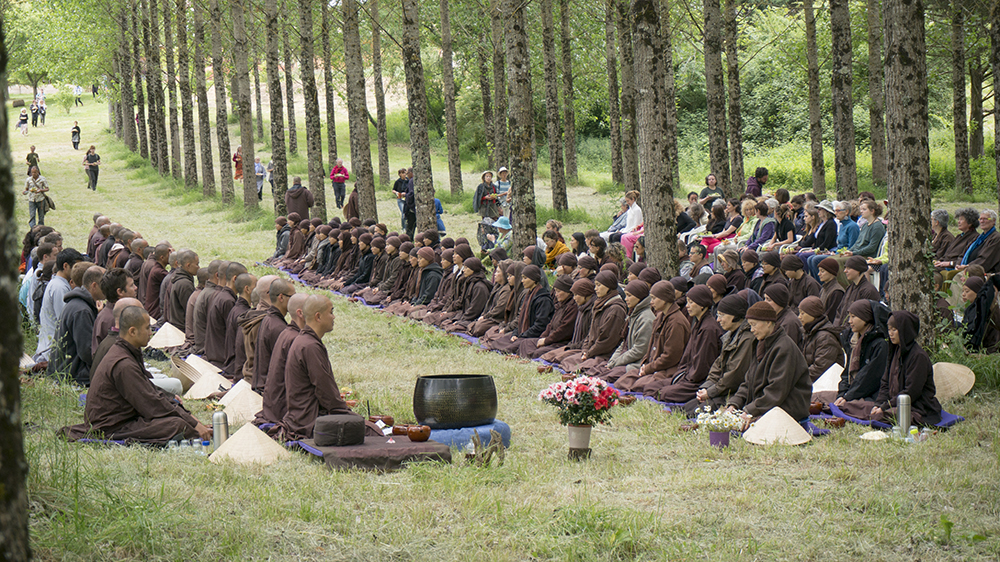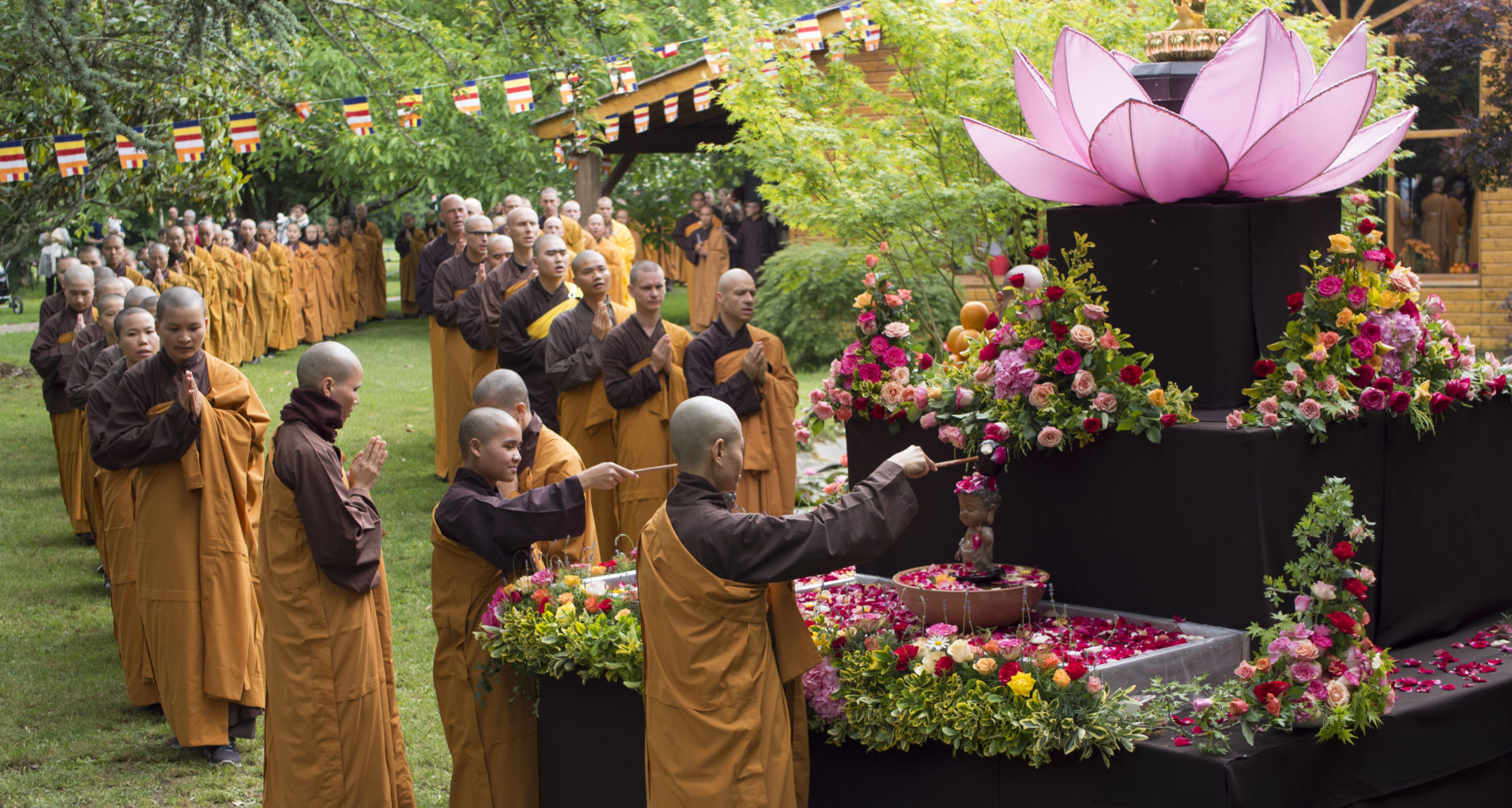A Simple Approach
By John Bell in October 2018

Thich Nhat Hanh asks Dharma teachers and Order of Interbeing members to share the teachings far and wide. He does not mean by proselytizing or crusading but by offering it, living it, and being it. He has also emphasized developing Sanghas as a support to our practice.
A Simple Approach
By John Bell in October 2018

Thich Nhat Hanh asks Dharma teachers and Order of Interbeing members to share the teachings far and wide. He does not mean by proselytizing or crusading but by offering it, living it, and being it. He has also emphasized developing Sanghas as a support to our practice. I stumbled on a wonderful and enjoyable way to do both.
About five years ago, I was asked to teach a meditation class in a local adult education center. In the United States, many communities organize classes for adults in the area. Local folks teach the courses; students pay a modest fee. The classes might include learning to cook Chinese food, use Facebook, repair your car, do ballroom dancing, play guitar, make stained glass, or prepare your
income tax return. Often, a class on wellness is offered.
I began offering a six-week class called “Mindfulness in Everyday Life: Teachings of Thich Nhat Hanh” one evening a week. I wrote a short description for the catalog. The adult education center advertised the class, registered participants, and arranged a classroom. Fifteen people signed up. Most had no formal meditation practice. We enjoyed sitting, walking, and eating meditation,
exploring our senses, and coming back to our bodies. We also had “home practice.” We experienced the practice with instructions, before we introduced any conceptual frameworks or teachings. We formed a mini-community fairly quickly and came to feel close to each other as we shared about our lives and experience with the meditation. People found the practice nourishing and helpful.
As the course neared its end, students asked how they could continue. I couldn’t keep teaching the class then and did not feel I could invite them to my own Sangha. It would be too hard to absorb fifteen new people all at once. The best I could do was to provide them with a list of area Sanghas. But a light bulb went
off in my mind.
The next four times I taught the course, I invited a different Order of Interbeing member or experienced practitioner from my Sangha to be a kind of unofficial assistant. They shared their own practice and got to know fellow class members. Then, when the question came, as it always does, “How can we continue?” I
could turn to the Order of Interbeing member whom they knew and say that they were offering to continue convening the group as a Sangha. This simple idea generated three new Sanghas.
I love the elegance of this. It allows folks to try meditation in a class endorsed and organized by a trusted community organization. I meet and teach a whole new group of people each time. The assistant Order of Interbeing member observes a model of how to structure a series of classes and build relationships among the students. It allows students to experience the practice in a safe, low-risk context with encouragement to practice at home during the week and share their experience the following week, which provides regular and timely feedback. They learn from each other. Class members develop a natural desire to become part of a continuing Sangha. This way of sharing the Dharma and seeding Sanghas could be replicated in many locations, wherever adult community education programs exist and wherever experienced Plum Village practitioners are available to offer such a “class.” I think Thay would be happy with this approach.


